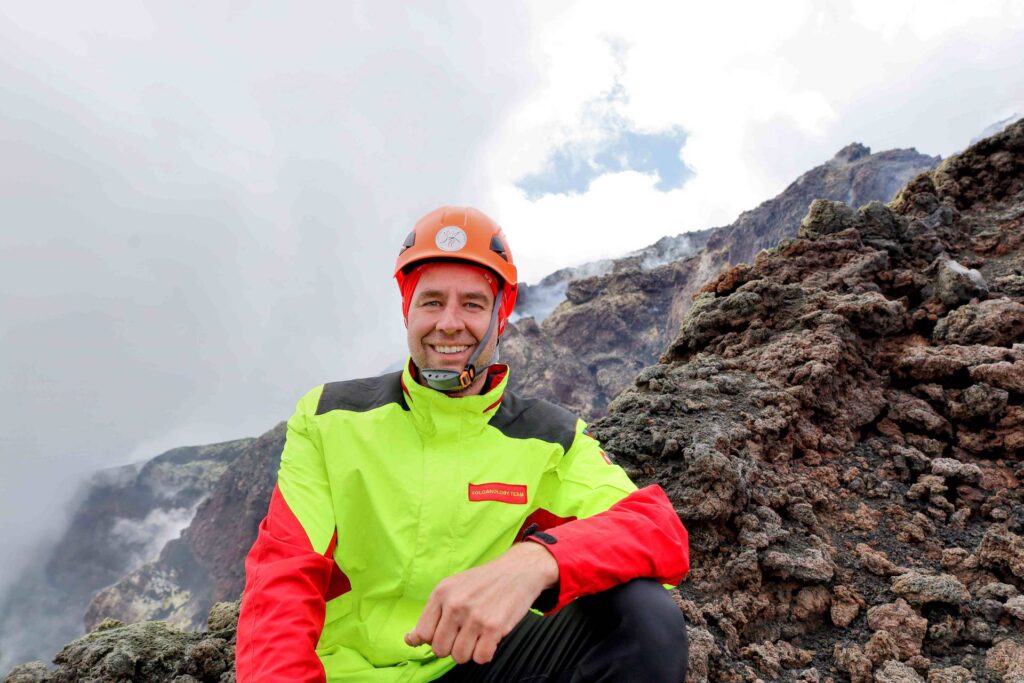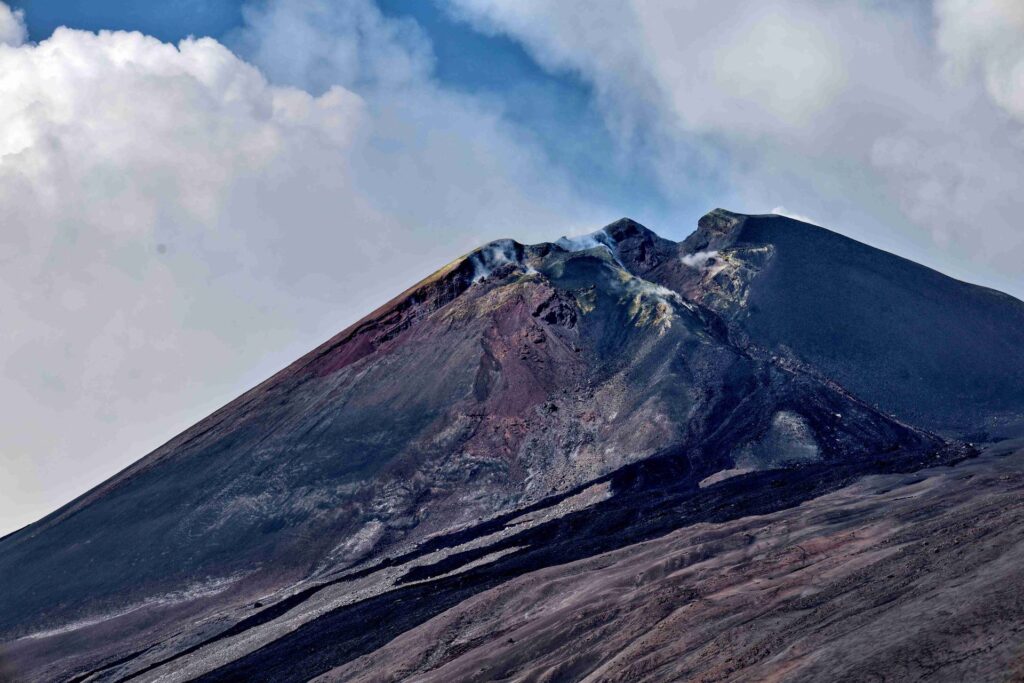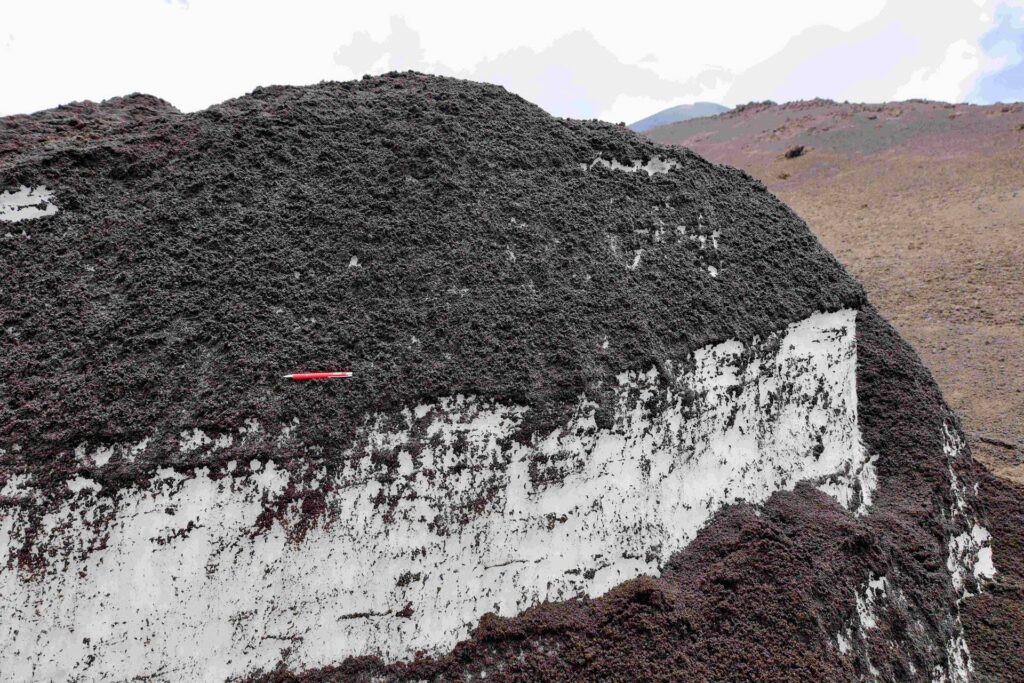Prof. Lukáš Krmíček has started cooperation on research into risks related to the dynamics of Etna’s volcanic slopes
Our colleague, volcanologist Prof. Lukáš Krmíček, has recently returned from field research on Etna, which he carried out together with volcanologists from the Istituto Nazionale di Geofisica e Vulcanologia – Osservatorio Etneo. The reason for his research was both to document current eruptions (the last eruption of Etna occurred during his field research on 19 June) and to take samples of selected rocks to test their physical and mechanical properties. Everything is part of the preparatory phase of a larger international project coordinated from Potsdam, Germany, which, if implemented, will focus on conducting a deep borehole oriented towards researching the overall stability of the potentially most problematic eastern slope of Etna. The atmosphere of Etna today is captured in the attached images.
Etna is a massive active volcano that forms a significant dominant feature of the eastern coast of the Italian island of Sicily. Its height is constantly changing due to ongoing eruptions, but in 2024 it reached over 3,400 meters, which is the highest recorded value since the beginning of measurements. The volcano covers an area of 1,190 km² (this value is almost comparable to the extent of the largest volcanic mountain range in the Czech Republic – the České středohoří) with a base circumference of about 140 km. The area around the volcano is inhabited by approximately 1 million inhabitants. Etna has been on the UNESCO World Heritage List since 2013. Etna was included on the list for its extraordinary scientific importance and as an example of “living” geological processes. However, due to explosive and effusive eruptions, the slopes of Etna (including its four summit craters) are very unstable and pose a permanent risk. We could observe a small demonstration of the danger of Etna at the beginning of June, when dramatic videos of fleeing tourists went around the world. The reason for their escape was the partially collapsing southeastern crater of Etna, from which a fast-moving mixture of hot ash, gas, and rock fragments was released.
We look forward to the results of his research!


